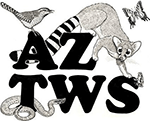Hello and thank you again to all those who volunteered their time and sugar for our Backyard Bats project this past season! Despite the universal challenges of 2020, we had a great turnout. Attached is a brief analysis from project collaborator Ted Fleming comparing season summary form data collected in 2019 and 2020.
In other news, our scientific journal article discussing the findings from data collected between 2008 and 2018 was recently accepted by the Journal of Mammalogy! The article has not yet been assigned to a printed volume, but in the meantime the article abstract can be found at the following link: https://academic.oup.com/jmammal/advance-article-abstract/doi/10.1093/jmammal/gyab054/6288402
We are now officially launching this project again for the 2021 season! Your input will be valuable to our monitoring efforts…the more data, the stronger our findings. Just go to www.azgfd.com/wildlife/backyard-bats and keep track 2-3 times per week of how much your feeder is drained overnight by bats, and then fill out the online Data Input Form. There is also a lot of information on the above website – instructions for the project, info about the bats, what we’ve learned so far from this citizen-scientist project, and interesting articles. If you can get a photo or video of the bats at your feeder at some point, we can usually identify which species you have.
If you have any questions, please feel free to let me know. We are always looking for new volunteers, especially in areas in Southern AZ outside of Tucson, so please help to spread the word!
A few small reminders for the 2021 season:
§ Make sure that you hang your feeder high enough off the ground that the bats will not be in danger from feral/outdoor cats. Also, the bats can be a bit messy at times so keep any patio furniture you don’t want to clean away from the feeder.
§ If your feeder has bee guards on each port that can be removed, this will make it easier for the bats to access the nectar.
§ We ask that you take note of overnight changes to the fluid levels in your hummingbird feeders at least twice per week, but any amount of data you can provide will be helpful.
§ Submit your observations on the website by clicking “Weekly Data Input Form” just below the photo. More detailed information can be found by clicking “Instructions and Information”.
§ Negative data (i.e. no change in fluid level was observed) are just as important to us as drained feeders.
§ Take a quick look at the “End of Season Summary Form” located on the website to see what information we will ask of you at the end of the 2021 season. It may help to take notes throughout the season so you can easily refer back to them when the time comes.

